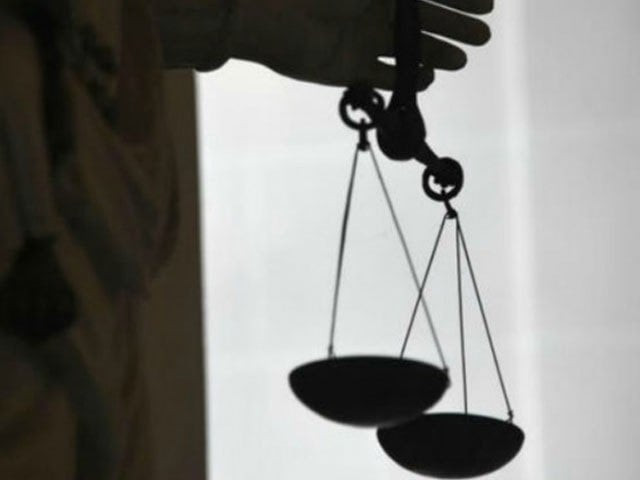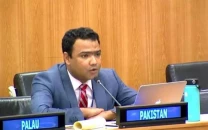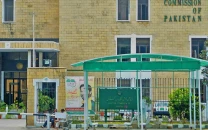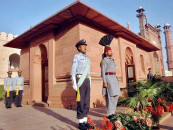Lawyers call for better security at Sector F-8 Kutchery
Recall March 3, 2014 gun and bomb attack by terrorists

Photo: AFP
The grave situation at the district courts was discussed by members of the Islamabad Bar Association (IBA) who held a general body meeting on Sunday to offer prayers and pay tribute to the martyrs of the March 3, 2014, terror attack on the district courts.
During the meeting, it was highlighted that the just a couple of months ago, the special branch of the Islamabad Police had termed the courts a security risk with metal walkthrough gates, closed circuit television (CCTV) security cameras inoperative while there is scant space for parking for either litigant, lawyers or even the staff of the court.
IHC decides over 15,000 cases in two years
Further, the presence of illegal chambers of lawyers in the vicinity of the courts has also been deemed as a security threat by the police.
The biggest example of poor security at the district courts came last week when two opposing groups opened fire on each other in the district courts, the lawyers said.
They recalled that district and session judge Sohail Nasir had raised questions about the security arrangements in the district courts while the registrar of the Islamabad High Court (IHC) had directed Islamabad Police Security SSP to make better security arrangements at the courts but in vain.
IBA President Chaudhry Khanzada said that the terrible incident of 2014 would not have transpired if security at the courts was satisfactory.
Shahid Adnan Randhawa, who has a chamber in the district courts and was a witness to the horrific 2014 attack, recalled the incident.
“My chamber was only a stone’s throw from the site of the attack,” he said, adding that he and some junior lawyers were in the chamber when they heard sounds of gunfire and bombs going off.
“We locked ourselves in the chamber to protect ourselves,” Randhawa said, adding that when a lull came during the heavy exchange of fire, they gathered their courage and fled the chamber.
He added that they saw a number of lawyers, litigants and even policemen hiding in different parts of the district courts clutching to their weapons instead of venturing out and taking on the terrorists head-on.
Randhawa, though, gave caution to the wind, stating that because the courts currently exist in buildings meant to house commercial markets, it was impractical to expect stringent security.
No evidence found against MQM leaders in hate speech cases
Advocate Asif Tamboli, who had also witnessed the horrific attack, said that a permanent judicial complex in the capital could help provide better security arrangements.
Recalling the day’s events, he disclosed that no security forces had approached the site even though terrorists continued their brazen assault for around half an hour thus. During this time, anyone who was unfortunate enough to cross paths with the terrorists fell to their guns.
At least six men, armed with automatic weapons and explosives allegedly affiliated with Ahrar-ul-Hind — a splinter group of the Tehreek-e-Taliban Pakistan (TTP) had attacked the district courts on the morning of March 3, 2014. After attacking two police officers deployed at a back entrance to the complex maze of courts, offices and lawyer chambers, the attackers had stormed the main atrium of the courts.
Among those killed was Rafaqat Ahmed Awan, a district judge.
Published in The Express Tribune, March 4th, 2019.



















COMMENTS
Comments are moderated and generally will be posted if they are on-topic and not abusive.
For more information, please see our Comments FAQ